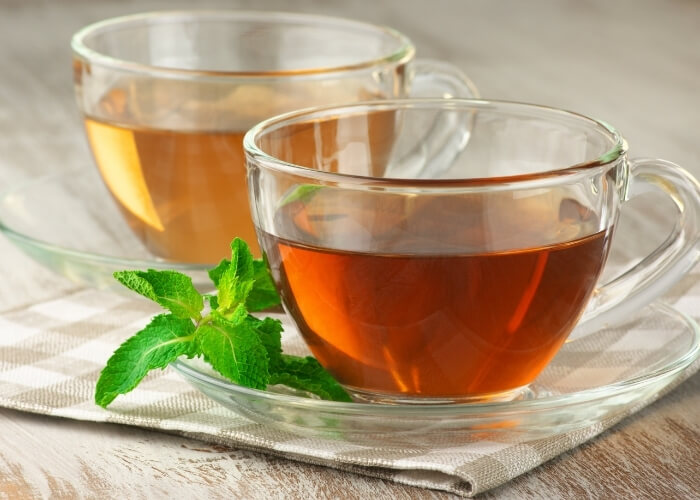Learn how flavonoids found in vegetables and fruits reduce oxidative stress and other illnesses.
Eating different colored vegetables and fruits, known as “eating the rainbow,” is good for us and recommended by doctors and nutritionists. But why is it important to eat many different colors of fruits and vegetables?
The answer is simple. Different colored vegetables and fruits – from red strawberries to green broccoli and yellow butternut squash – do more than paint a colorful picture on your plate and in the produce section at the grocery store. They also contain chemicals, called phytonutrients, which add to the range of colors and contribute to various aspects of our health.
One important type of phytonutrients where colors come from is flavonoids. Flavonoids are antioxidants that offer multiple beneficial effects, such as lowering blood pressure, reducing the risk of cardiovascular disease, and improving cognition.
The different classes of flavonoids are:
- Flavonols – such as Quercetin
- Flavones – such as Luteolin
- Flavan-3-ol Monomers – such as Catechin
- Anthocyanins – such as Cyanidin
- Polymers – such as Theaflavin
How do flavonoids work?
Oxidants and free radicals are produced from cell metabolism or external sources, such as cigarette smoking, pollution, or radiation. They have a dual role. They can be harmful or helpful to the body. An overload of free radicals accumulated in the body leads to oxidative stress. Oxidative stress leads to cell damage and plays a role in developing illnesses, including cancer, autoimmune disorders, rheumatoid arthritis, neurodegenerative diseases, cardiovascular diseases, cataracts, and aging.
To counteract oxidative stress, some antioxidants are produced by the body and others in foods we eat. The antioxidants from food sources include Vitamin E, Vitamin C, Carotenoids, and Flavonoids.
Each vegetable and fruit have a unique combination of flavonoids that have different effects on the body. Their potent antioxidant activity helps prevent or delay chronic and degenerative ailments.
Cardiovascular benefits of flavonoids

Drinking green or black tea in moderation appears to be safe and may have beneficial effects. Drinking tea has been linked to lower levels of cholesterol. Green and black tea are rich in flavonoids, and people who drink them seem less likely to develop cardiovascular disease.
Studies have shown that tea and flavanol-rich cocoa products significantly reduced blood pressure, compared with low-flavanol-containing cocoa powder or flavanol-free interventions.
Flavonoids, being antioxidants, keep blood vessels healthy and blood flowing throughout the body.
Quercetin, Resveratrol, and Catechins – flavonoids found in high concentrations in red wine, have proven to reduce the risk of atherosclerosis, which is plaque buildup in arteries that can lead to heart attack or stroke.
Fending of forgetfulness
Scientists comparing people with the lowest daily flavonoid intake to people with the highest daily flavonoid intake found that those with the highest intake were less likely to report trouble with memory and thinking. The flavonoids that appeared to be protective are flavones, flavanones, and anthocyanidins. Some beneficial fruits and vegetables that help with cognition are brussels sprouts, strawberries, cauliflower, raw spinach, blueberries, sweet potatoes, and orange winter squash.
It is believed that flavonoids fight brain inflammation, as well as reduce the accumulation of substances called “amyloid,” as seen in Alzheimer’s disease.
Setting flavonoid goals
Tracking flavonoids in foods is not easy, and the amount varies from food to food. Aim to consume a wide variety of fruits and vegetables, which contain several types of flavonoids, along with many other phytonutrients. Balancing all the colors is important. No one color is superior to another.
Recent studies have shown that having 2 servings of fruits and 3 servings of vegetables each day is most effective. A total of 5 servings a day of vegetables and fruit offers the greatest benefits.

The bottom line
Eating more plants and less animal products is healthier. This provides necessary micronutrients, like flavonoids, which are proven to reduce heart disease, improve memory and prevent cancer. Vegetables and fruits are also good sources of fiber. Fiber keeps your appetite in check, promotes weight loss, improves blood glucose levels, and benefits digestion.

The western-style diet, which is high in calories, processed foods, and animal products has a detrimental effect on human health and the environment. The greenhouse gas emissions from producing animal-based foods are higher than for plant-based foods, making this type of diet unsustainable in the long term.
Eating only a plant-based diet can carry risks of not getting enough iron, other minerals, vitamins, and protein. Know that this can be overcome by choosing the right vegetarian foods if you eat only a plant-based diet. Beans, lentils, edamame, quinoa, and nuts are all good sources of protein. Lentils and spinach are rich in iron. Vitamin B12, primarily sourced from animal products, can also be found in fortified cereals.
Aim at consuming 5 servings every day, and pack your plate full of colorful vegetables and fruits. Keep fruits where you can see them for snacks and desserts. Try new recipes that include more vegetables. It is always better to eat fresh produce, as they contain higher levels of nutrients. Frozen varieties are better if they are consumed within a few weeks. If you do choose frozen or canned produce, read the labels to make sure they do not contain extra sugar, sodium, or additives.
A nutritious diet and other healthy lifestyle habits can go a long way to better health. These include quitting smoking, maintaining a healthy weight, being active, and managing stress.
“Every time you eat or drink, you are either feeding disease or fighting it.”
– Heather Morgan
“The food you eat can be either the safest and most powerful form of medicine, or the slowest form of poison.”
– Ann Wigmore


